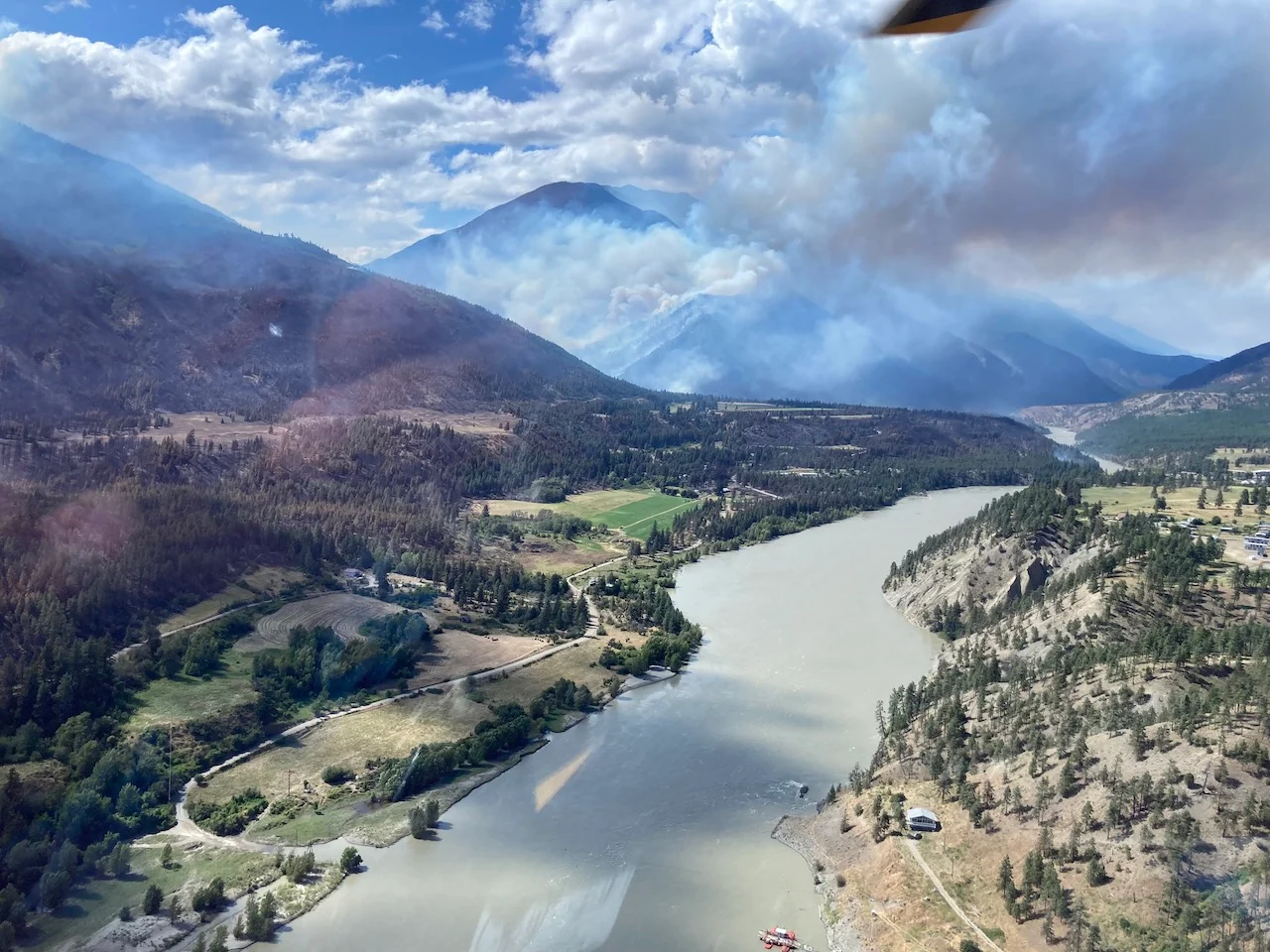
Two-faced summer spawns an active wildfire season in the West
B.C. and Alberta are ablaze, so how did we get here?
Things looked good. Too good.
The wildfire season remained eerily quiet through a big chunk of the summer across B.C.
A two-faced summer roared to life, and someone flipped a switch and ordered endless weeks of hot and dry weather after such a sluggish start to the season.
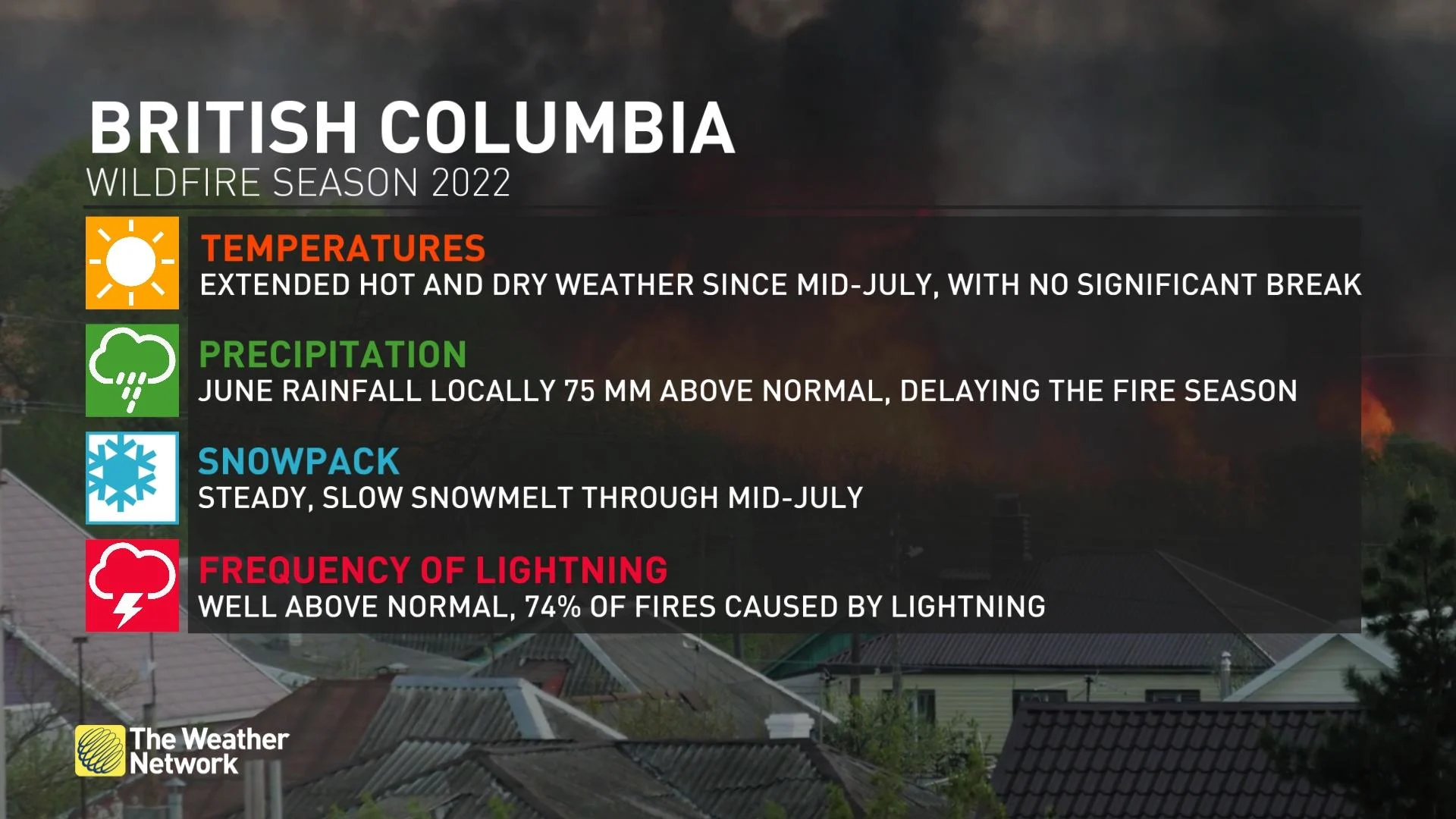
June sets the stage and determines how quickly a wildfire season will develop. June can buy time.
Judging by the precipitation anomalies, it was unusually wet and chilly. Reports of high-elevation snowfall spilled into the first several days of July.
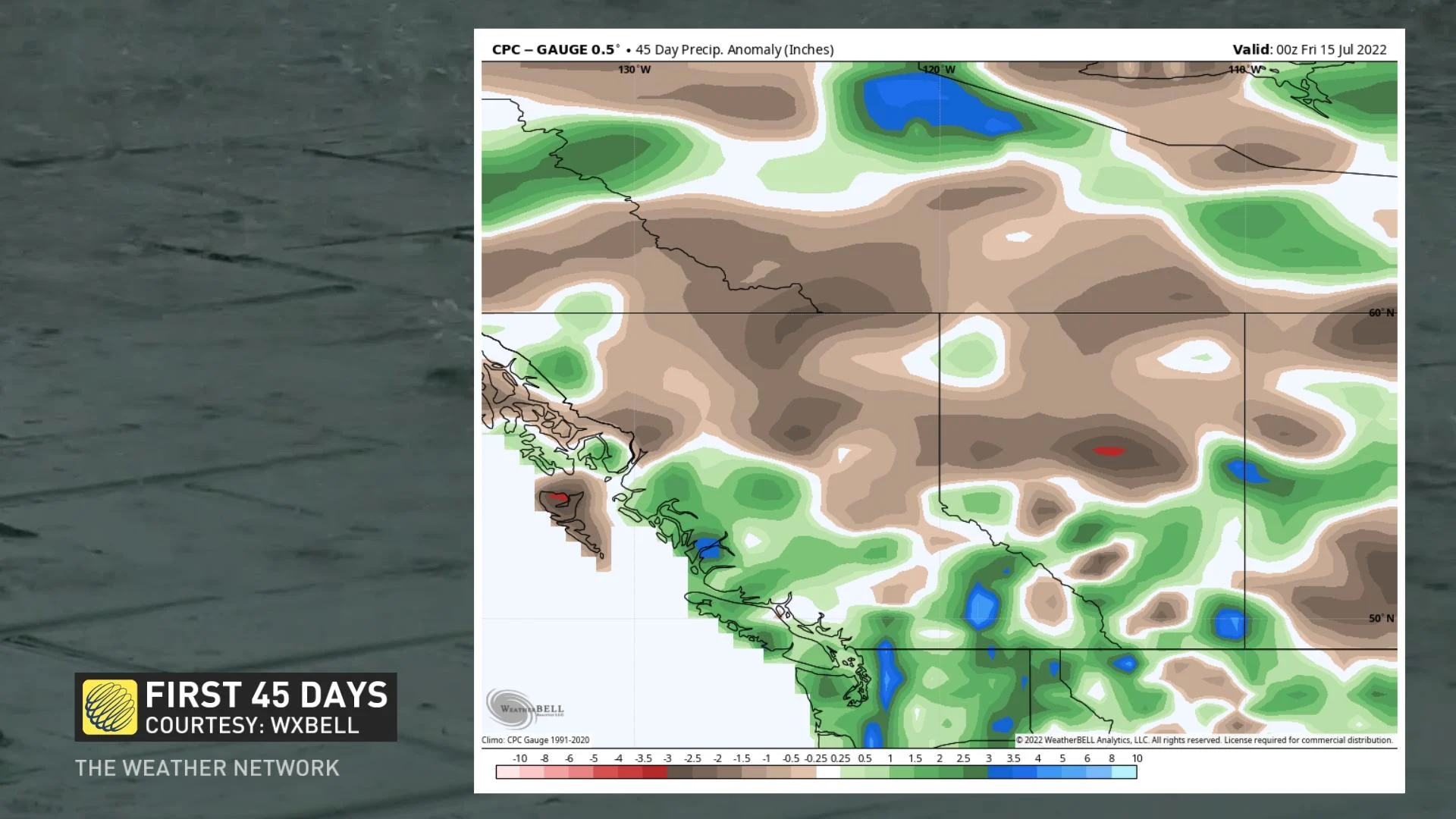
This season also features a bright spot, including a record-low amount of human-induced wildfires. In fact, according to BC Wildfire Service, we are experiencing the lowest human-caused wildfire season since 1950. Just over 20 per cent of wildfires have the initiation source traced back to people, with lightning causing the remaining blazes.
Unfortunately, Alberta did not follow along. Humans have been responsible for approximately half of all fire starts in that province.
Moreover, lightning has been abundant through the second half of summer as upper troughs pinwheel around a robust ridge over western North America. The southerly flow brought enhanced moisture from the monsoon season across northern Mexico, fuelling lightning storms across the province.
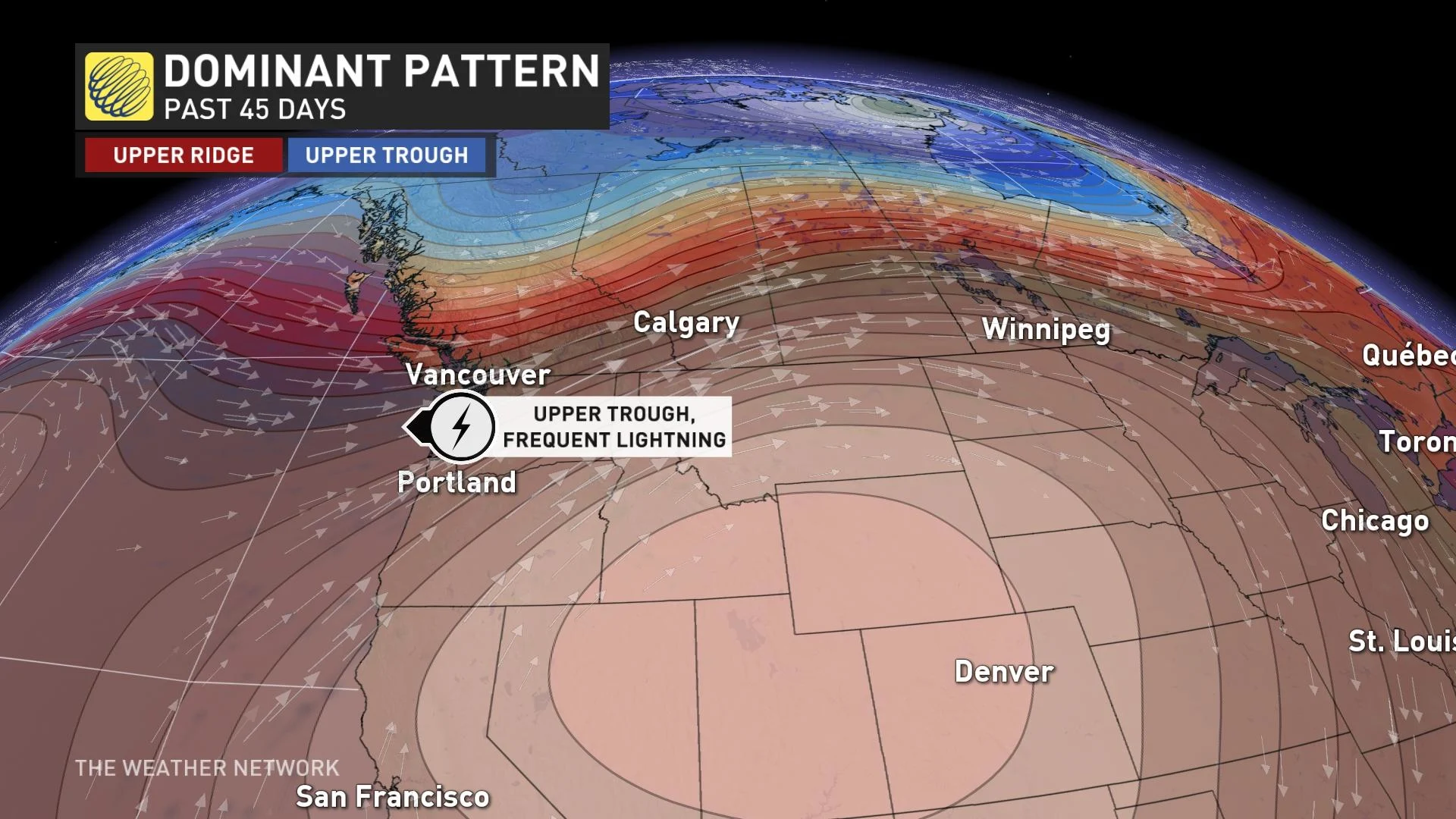
A big chunk of the poor air quality and smoky skies belong to fires south of the border. Unfavourable winds out of the southwest continue to siphon up smoke from the Pacific Northwest, spiralling smoke across Western Canada.
September will be warm across the West, so, unfortunately, heightened wildfire activity can continue throughout the month. The storm track will be stubbornly just a little too far north, targeting central and northern British Columbia and Alberta.
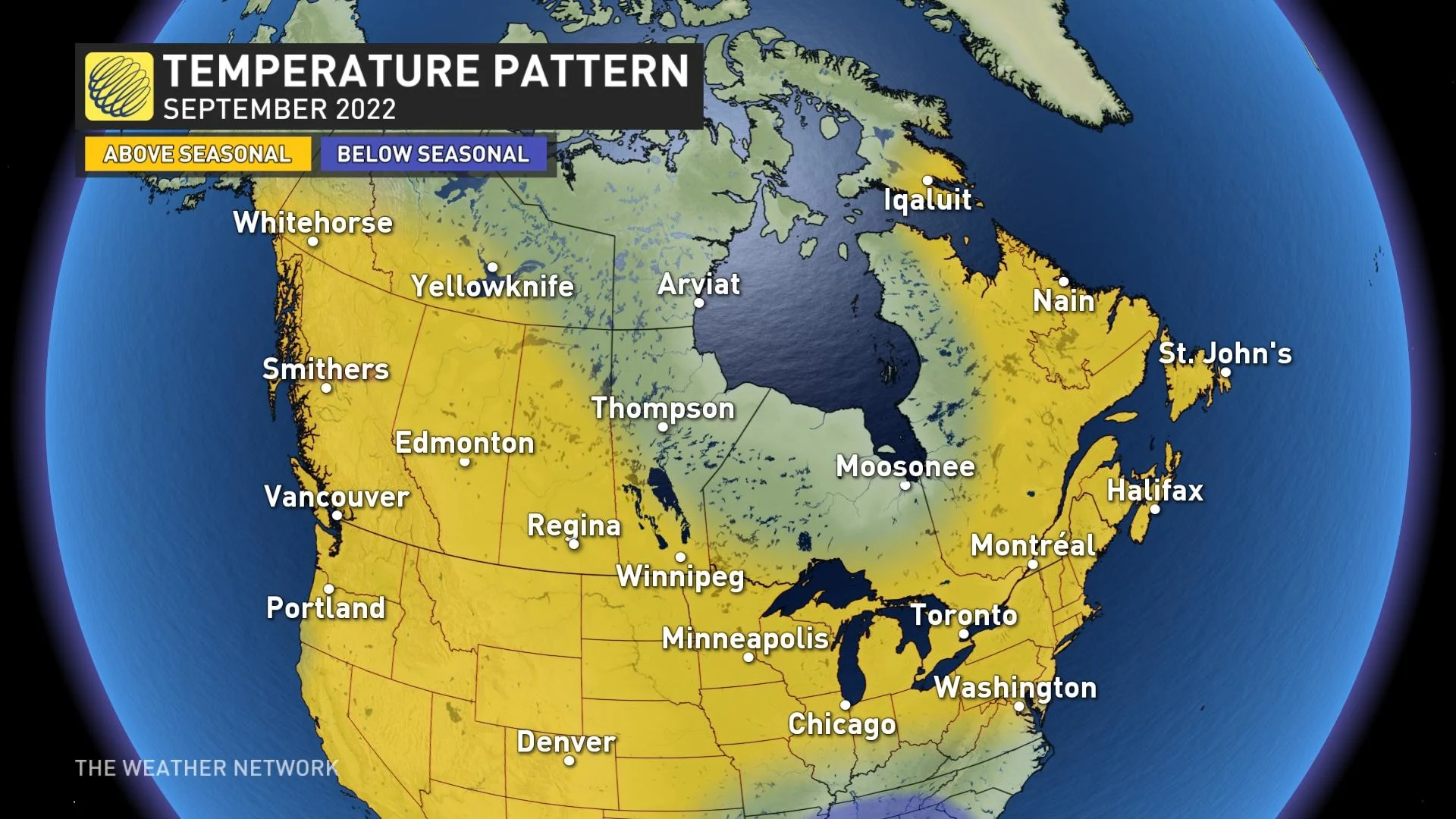
A couple of sharp cooldowns and troughs should continue to limit the fire activity across Alberta, where most active wildfires are in control. The bulk of Alberta’s fire activity has occurred in the Fort McMurray fire district, where more than 100,000 hectares and more than 100 wildfires have occurred this season.
Thumbnail courtesy of BC Wildfire Service/Twitter.






